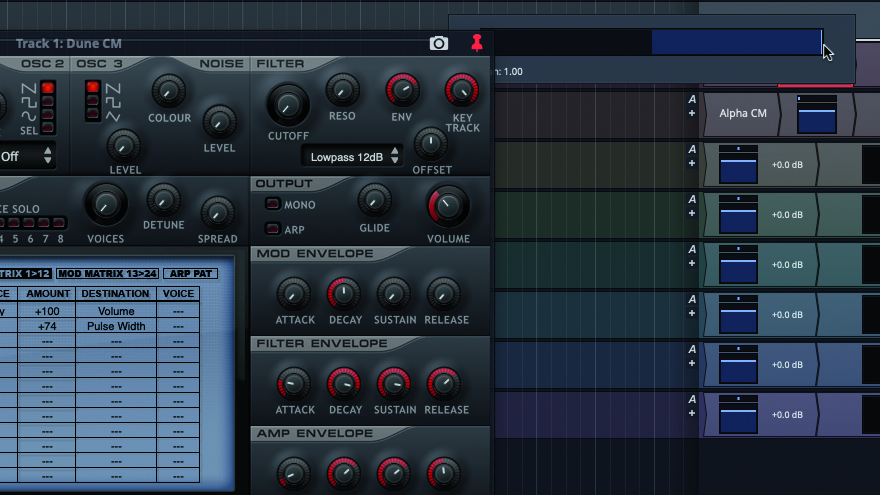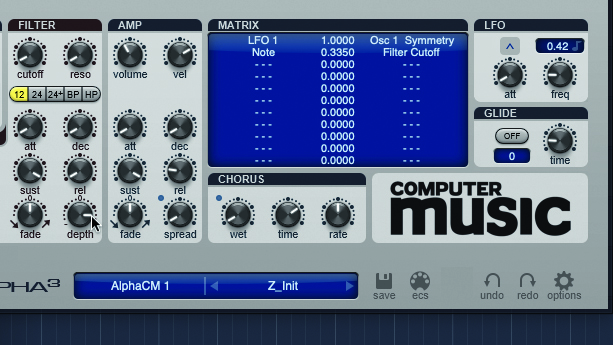The 40 greatest synth sounds of all time, No 7: Eurythmics - Sweet Dreams (Are Made Of This)
Here's how you can get the sound of this '80s classic
Eurythmics hit single seemed to come out of nowhere, yet the road to success was long and arduous for the duo of Annie Lennox and Dave Stewart.
Having met in 1975, the pair initially played together as members of The Catch, a punk outfit that would eventually morph into five-piece pop/new wave band The Tourists, with whom they’d cut three LPs.
Despite some success, tensions within the group and the artistic constraints of a band left Stewart and Lennox dissatisfied and determined to carry on as a duo, bringing in various collaborators as and when needed.
Calling themselves Eurythmics, they debuted with In the Garden, recorded with Conny Plank in 1981. Contributors to the LP include Can’s Holger Czukay and Jaki Liebzeit, D.A.F.’s Robert Görl, and Blondie’s Clem Burke.
A hybrid of electronic, post punk, and Krautrock, this rather fine debut was all but overlooked, leaving Lennox and Stewart to rethink their approach. They decided to retain the name, but to go it alone.
As such, Sweet Dreams (Are Made of This) is by necessity an exercise in restraint. After the commercial disappointment of their previous album, the duo sequestered themselves away in a small project studio they’d outfitted with the help of a bank loan. There they toiled away with the merest handful of second-hand synths, an 8-track recorder, and a single microphone.
Built around a rhythm bed created with their recently acquired Movement Systems Drum Computer, purchased with yet another loan, Sweet Dreams... is built on a simple bass sequence from a Roland SH-101, over which Lennox was inspired to play another part on a borrowed Oberheim OB-X.
Want all the hottest music and gear news, reviews, deals, features and more, direct to your inbox? Sign up here.
The latter began as a stock strings patch, tweaked for a faster attack. These sounds are panned in the final mix. It’s the combination of these two sounds that form the memorable riff heard throughout the tune.

Step 1: We’ll be using Dune CM to recreate the main synth riff from the classic Eurythmics track. We’ll start with an Init patch, and set the Osc Mix dead centre. We’ll choose a square wave for Osc 1, and nudge both Fat knobs to 9%. In Osc Common, we’ll set the P/Width to 19%. Clicking Mod Matrix 1>12, we’ll choose LFO 1 for the second Source.

Step 2: We’ll select Pulse Width from the Osc Common menu as the destination, with an Amount of 74%. Going to LFO 1, we’ll set its Rate to 0.02 Hz. We’ll set Osc 1’s Fine tuning to -0.4, and Osc 2’s to 0.4. In the filter section, we’ll crank the Cutoff fully down and Key Track fully up. The Env amount should be 72% or so.

Step 3: We’ll set the Amp Env’s Attack to around 11%, Decay and Sustain to 68%, and Release to 47% or so. The Filter Envelope’s Attack should be 23%, Decay and Sustain at 88%, and Release should be set to about 68%. That gets us the main riff sound. Now we’ll pan it hard right, just as it was in the original.

Step 4: We’ll use AlphaCM for the bass. Open the preset browser and choose Z-Init. Set both Oscs’ Wave fully to their A waves. Select Square1 as Osc 1’s A wave. Set its Detune knob to just over 9 o’clock. In the Matrix, we’ll select LFO 1 as the first mod source, and Osc 1 Symmetry as its destination, with an amount of 1.00.

Step 5: Clicking the LFO’s Rate display, we’ll select Off to detach it from host sync. We’ll set its frequency to 0.42. In the matrix, we’ll select Note as another source, with Filter Cutoff its destination. Amount will be 0.3350. In the Filter, we crank the Cutoff knob fully down, and set the Filter Envelope Depth to 3 o’clock.

Step 6: The Filter Envelope’s Decay should be at 11 o’clock, and its Release at 2 o’clock. The Amp Envelope’s Decay and Sustain knobs should both be at around 10 o’clock, and the Release just under 11 o’clock. That’s about it for the bass patch. It should be panned hard left and mixed against the main riff. A bit of reverb wouldn’t go amiss!


Computer Music magazine is the world’s best selling publication dedicated solely to making great music with your Mac or PC computer. Each issue it brings its lucky readers the best in cutting-edge tutorials, need-to-know, expert software reviews and even all the tools you actually need to make great music today, courtesy of our legendary CM Plugin Suite.
